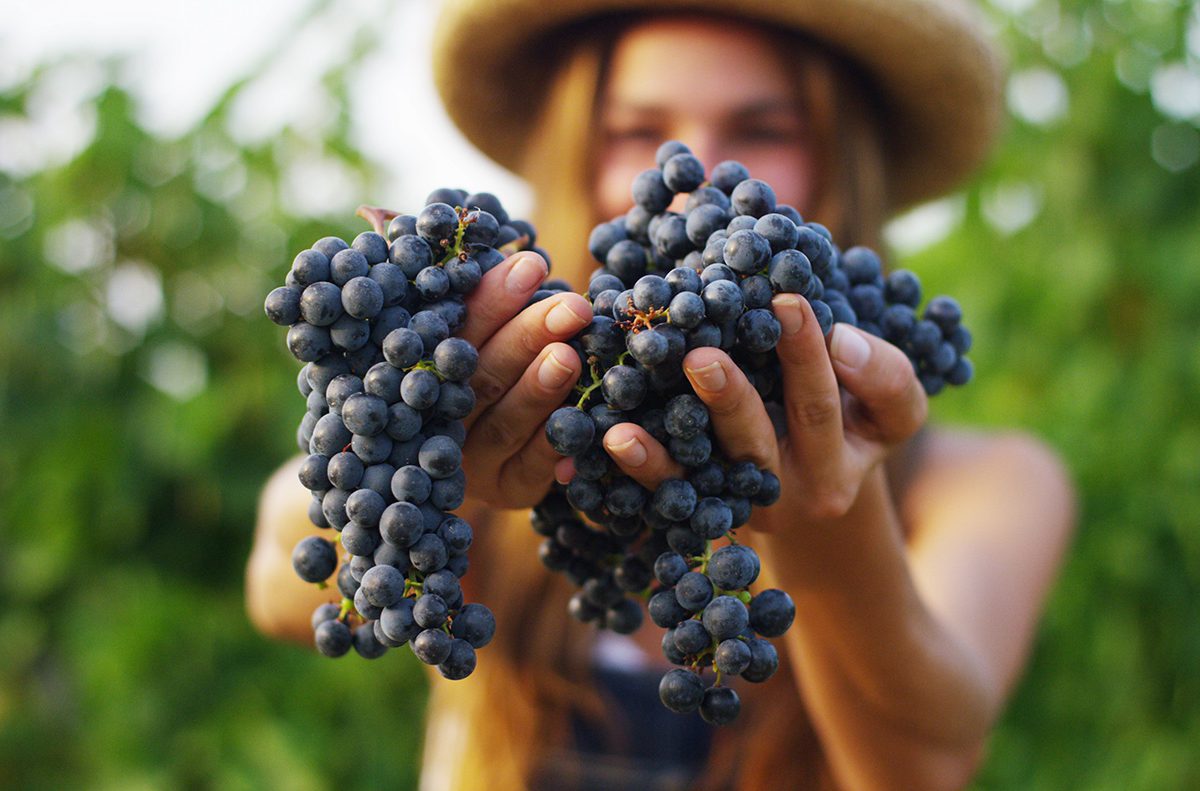
The end of the summer in Crete signals the beginning of one of the oldest and most exciting agricultural practices taking place on the island since the Minoan times. The Greek term Trygos means wine harvest, a hard laboring but also pleasant job that results in the production of a Cretan-favorite product: wine!
According to archaeological findings in southern Crete, grape products were already popular in 3000 BC, as indicated from the examination of organic residue in jars found in the Minoan settlement of Myrtos. Other findings and analyses suggest that wine was consumed and stored in pots and barrels since 1900-1700 BC, and perhaps even before.
However, we do not need too much evidence to accept that Greece always had a special connection to wine – let’s not forget there was even a God dedicated exclusively to the celebration of wine and winemaking, the eccentric Dionysus or Bacchus.
Crete’s unique climate and geomorphology ensure the production of high-quality wine. It is not a coincidence that many Cretan wines are awarded every year and fill the wine lists of top-notch restaurants around the world. Traditionally, every Cretan family produced their own wine, and trygos was primarily a family business. Trygos season usually lasts from the end of August to mid-September, depending on the microclimate of each location.
First, the grapes are collected from the family vineyard and sometimes separated into categories, as some will become raisins, other will be consumed as table grapes, but the best are always destined to become wine. The collection of grapes usually starts early in the morning to avoid the strong sun, which, however, cannot be entirely avoided, as trygos usually lasts until late afternoon (depending on the size of the vineyard). This is also the most challenging part of the process: the minimum daytime heat at this season would be 30C.
At around noon, the family takes a break under the refreshing shade of a tree to enjoy a light lunch and rest a bit. The lunch is usually simple and typical Cretan: paximadia (Cretan rusks), tomatoes, cucumbers, olives, boiled eggs and potatoes, some cheese and – naturally- grapes! If somebody has a musical instrument and friends and relatives join the Trygos process, the lunch break can turn into a short pic nic party!
Once the harvest is completed, the heavy grape crates are gathered in a location where they can then be easily transferred to the wine press. In the old times, each family house had its own wine press (patitiri) in an outdoor area and the pressing process was done with a body tool: the feet! Pressing the grapes with the feet was a fun process, especially for the kids, and looked like a funny chicken dance. However, this too was a job that had to be done carefully in order to extract all the grape juice, which then fell in the bottom of a container, usually a barrel. Once the pressing was done, the grape must was used to make the year’s wine, which is an entirely different process and story!
Cretan family wine often finds its way to local cafes and small taverns and is shared with family and friends with pride, as one of the most important and elaborate products extracted from the Cretan land, uniquely connected to history and family tradition.




